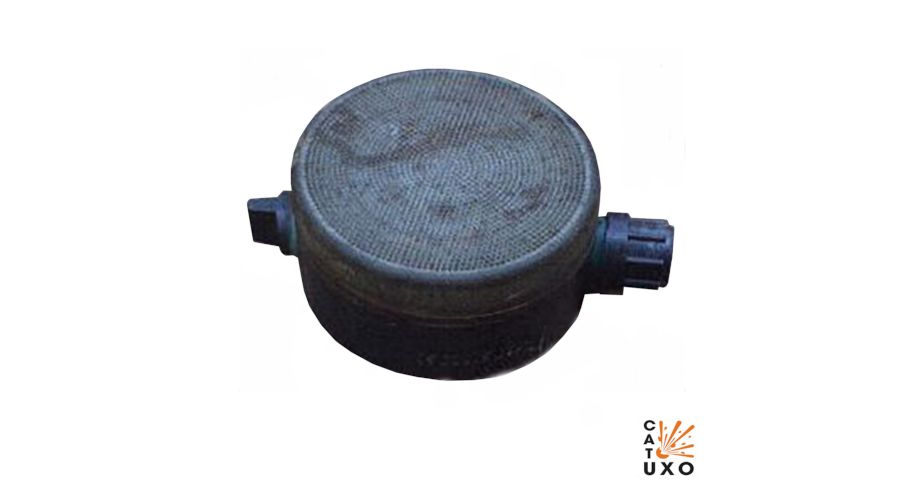The Military Council troops retreating from numerous villages in Kyaukkyi and Mone Townships within Nyaunglebin District in Karen National Union (KNU) territory, also engaged in systematic planting of landmines, including highly explosive MM-2 anti-vehicle mines, according to frontline sources.
Landmines, including anti-vehicle explosives causing significant harm within a 5-meter radius upon activation, were deployed by junta troops in the KNU 3rd Brigade area ,during their operations in villages like Talaingkhin, Nanza, Thamininnkone, Kywetalin in Kyaukkyi Township, and Thitchaseik, Kyaungpyar, Yan Myo Aung, Naungkone, Ngahtwaysoke in Mone Township, as reported by certain KNU administrative and military sources to KIC.
The tactical commander of the Karen National Liberation Army (KNLA), the armed wing of KNU, explained.
"The Military Council troops planted numerous landmines in every village they invaded, concealed explosives in sidewalks and stairs used by locals, and even in places where solar panels were installed. Among these explosives, there are MM-2 type anti-vehicle mines, known for their destructiveness, capable of not only killing individuals who trigger them, but also causing harm to all living things within a 5-meter radius. They also planted M 14 type plastic mines.
In July, when the Military Council invaded Nanza village, they set fire to the houses and scattered numerous landmines along the village's central main road. The harmful impact of these Military Council-planted landmines extended to Talaingkhin village, causing injuries to residents, pets, and livestock, as reported by locals.
A Kyaukkyi resident woman told KIC, "In Talaingkhin, there was an incident where people were injured when a car hit a landmine. Landmines were also scattered around Nanza village too. These mines were widely planted after Junta soldiers burned the houses in the village’s central areas, with the intent not only to hinder our mobility, but also to harm anyone who triggered them. As Military Council troops withdrew, villagers sought to return to their homes and assess their conditions. Consequently, KNU has established a cleared path to facilitate their return.”
Villagers Warned Not to Return Home without first Consulting KNU Mine-clearance teams KNU's Kyaukkyi Township spokesperson and KNLA officials have advised locals to prioritize contacting KNLA personnel when considering a return to their homes, acknowledging the potential risks of landmines, and to actively participate in KNU's educational initiatives.
"Local villagers should be aware that landmines may have been planted in each village where Military Council troops invaded, stayed for a while, and then left. To ensure safety, villagers should contact KNU and KNLA officers before returning to their village. If they notice anything suspicious, they should promptly inform the local KNLA troops. Villagers should only return to their homes once the area is confirmed to be safe”, an official of KNU 3rd Brigade advised.
KNLA members are actively conducting de-mining operations in Nyaunglebin District, unearthing over 50 mines laid by the Military Council. However due to the ongoing conflicts in the area, the demining efforts are constrained. Meanwhile KNU is accelerating its efforts, in collaboration with civil organizations, to educate the local population about the perils of mines, air strikes, and shelling.
As noted by mine experts, the 96.8-gram M 14 plastic mines require a pressure of 20 to 30 pounds to detonate, producing a significant blast with an impact extending approximately 10 inches above the mine.
The 650-gram MM-2 anti-vehicle mines can detonate with as little as 10 to 20 pounds of pressure, resulting in substantial damage within a 5-meter radius, and posing the potential for life-threatening bleeding injuries when stepped on by a victim.
In contravention of the 1997 Convention on the Prohibition of the Use, Stockpiling, Production, and Transfer of Anti-Personnel Mines and international humanitarian laws, the Myanmar Military persists in the use of landmines, as reported by Amnesty International (AI) in 2022, citing information from the Landmine and Cluster Munition Monitor, despite the majority of countries having banned their use.
As of December 2021, several months after the Military Council staged the coup, there were over 500 civilian casualties caused by landmines in 62 townships, with the possibility of additional unaccounted-for incidents in other areas, according to a report from the Landmine and Cluster Munition Monitor concerning Myanmar.
 See pic of MM-2 Myanmar MM-2, a high-explosive (HE), pressure-operated, anti-personnel (AP), blast landmine similar to the Chinese Type 58 a copy of the Russian PMN.
See pic of MM-2 Myanmar MM-2, a high-explosive (HE), pressure-operated, anti-personnel (AP), blast landmine similar to the Chinese Type 58 a copy of the Russian PMN.








